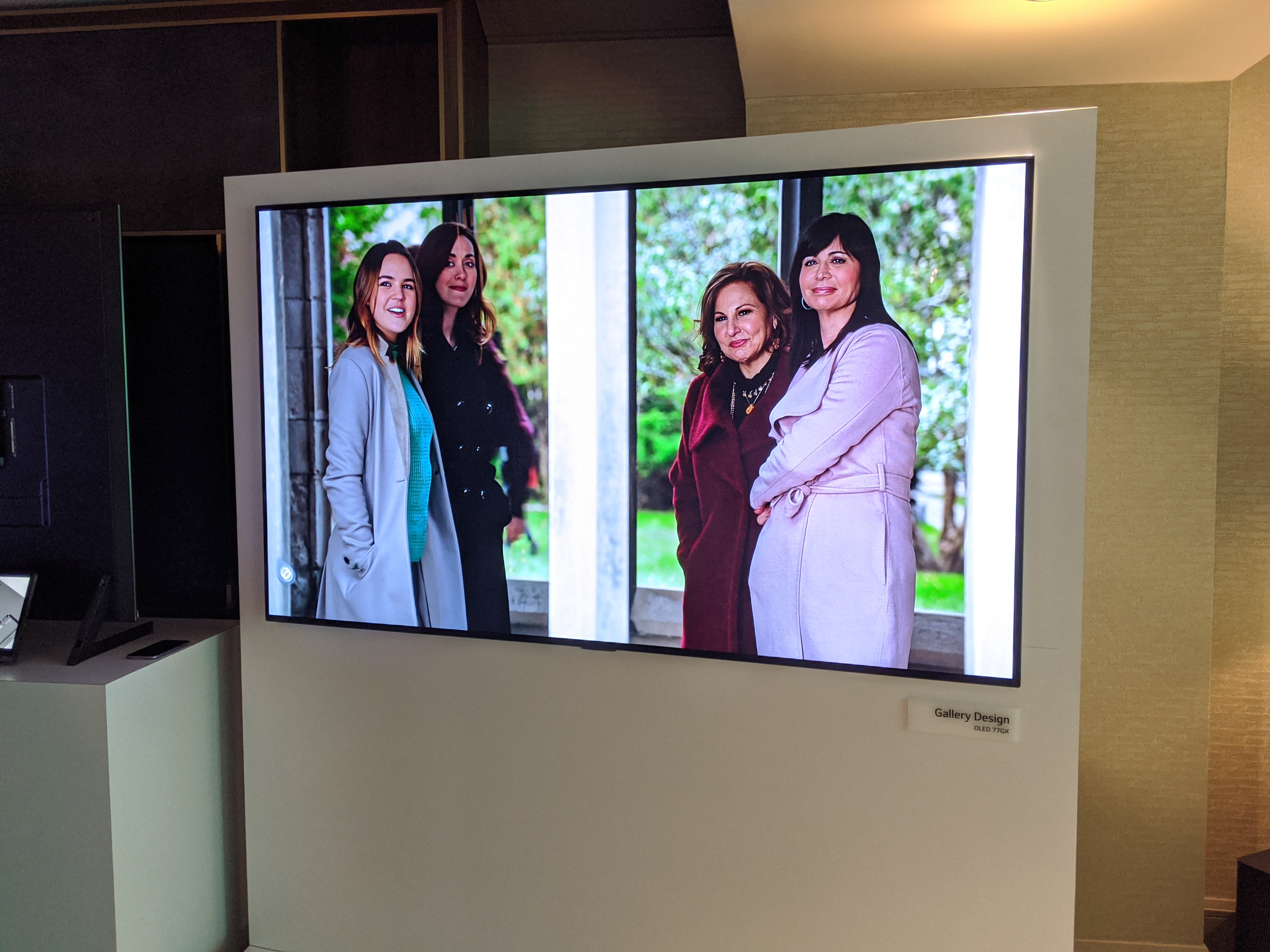Early Verdict
LG's Gallery Series of OLED smart TVs brings new looks and capabilities to wall-mounted sets, with OLED performance and amazing smart features.
Pros
- +
Stylish flush-mount design
- +
Powerful Alpha 9 gen 3 processor
- +
Voice interaction works without remote
- +
AI recognizes actors and delivers sports alerts
Cons
- -
Far-field mics raise privacy concerns
- -
Wall-mounting requires specific LG hardware
Why you can trust Tom's Guide
LG's 2020 lineup includes something brand new for this year, the new LG Gallery Series, a new OLED smart TV that's built specifically for wall mounting. Featuring LG's premium OLED panels and the latest improvements to webOS and processing hardware, the new LG GX Gallery OLED puts a superb smart TV into one of the most elegant wall-mountable designs we've ever seen.
While meeting with LG at CES 2020, we had a chance to get an early look at the Gallery Series TVs, specifically looking at the LG 77GX, the 77-inch model in the new series. In addition to the new design, this also gave us our first real look at the capabilities and features coming to LG's 2020 TVs, from advanced ports and TV tuners to broader voice interaction and AI capabilities.
The coolest feature? The Gallery Series (and other new LG TVs) can recognize actors on screen and even tell you what they are wearing, so you can but it on the spot.
Coming in March or April of this year, these new LG OLED models promise to be a great addition to LG's premium TV line up. Pricing details have not yet been announced, but the Gallery Series will be available in 55-, 65- and 77-inch sizes.
On-the-wall design
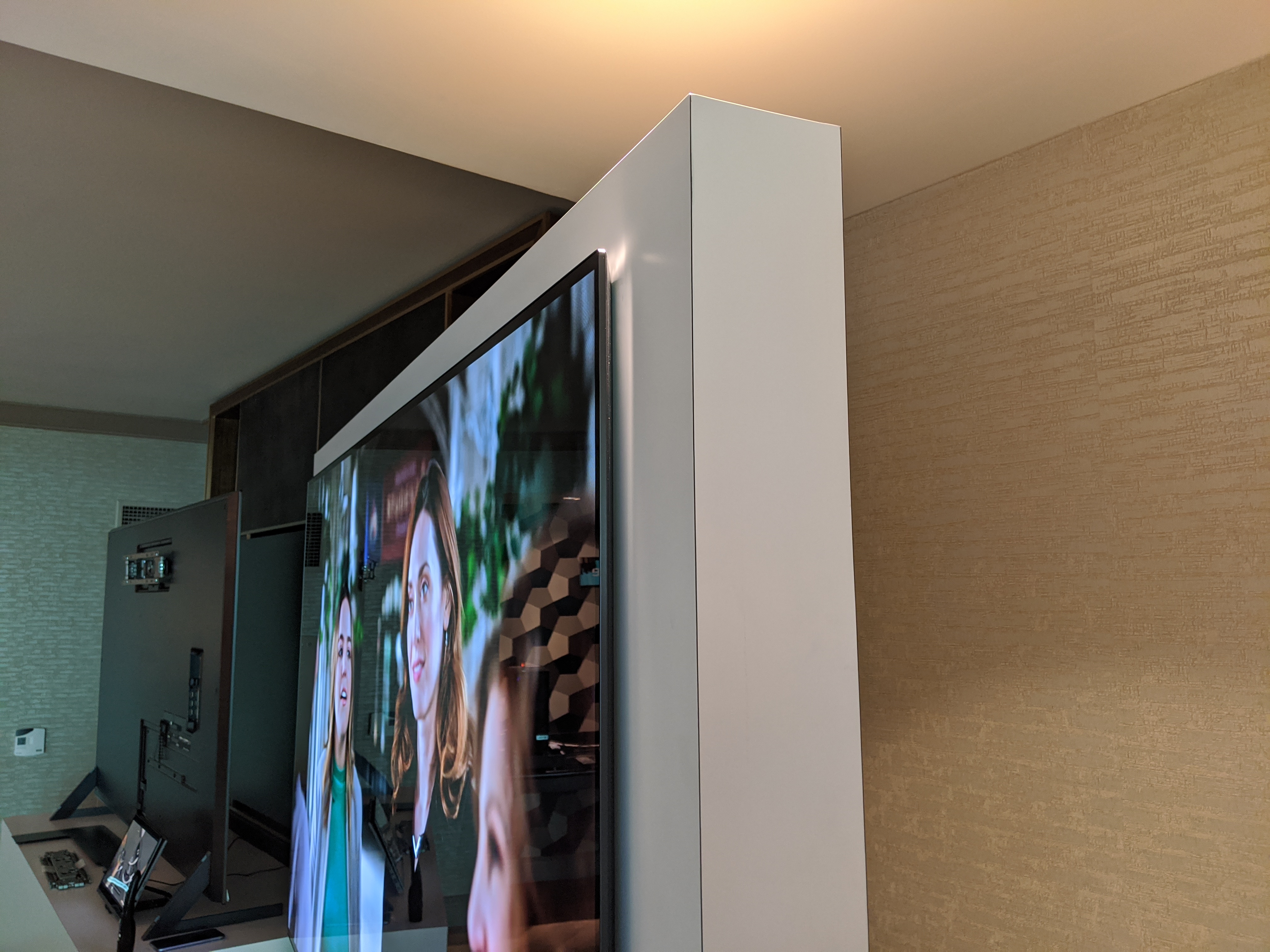
Unlike many sets that are designed to either rest on a stand or be hung on the wall with a generic mounting bracket, the LG Gallery Series is designed specifically for hanging, and features a distinctive flush-mount design that puts the TV right up against the wall.
These super-slim TVs are nearly as slim as LG's Wallpaper TV, and they embody many of the same design sensibilities. Unlike the Wallpaper, however, these sets don't require a separate soundbar to house speakers and other internals. The Gallery design provides just enough thickness to accommodate everything the TV requires, with components and sound built in.

That flush mount capability is due in part to a unique chassis design, which gives the TV a uniform 20-millimeter thickness and builds recessed mounting brackets into the backside of the set. This recessed mount works with a proprietary LG wall bracket to easily hang on the wall, but it does so without the extra inch or two of space that a traditional VESA wall mount would leave between the TV and the wall.
Get instant access to breaking news, the hottest reviews, great deals and helpful tips.
To maintain that minimal gap, the design also keeps cables out of the way. Recessed input panels and channeling for cables keep all of the cords tidy, without disrupting this flush mounting. A snap on cover helps tuck unsightly cables out of sight, though LG recommends professional installation with a recessed AV box, to prevent the cables from simply hanging down from the bottom of the TV.
Alpha 9 3rd gen processor: What it does
The TV is also outfitted with LG's Apha 9 3rd generation processor. The latest version of LG's video processing hardware, the Alpha 9 chip offers a range of improvements over previous iterations, with new refinements to picture enhancement, such as artifact removal, object-based sharpness, and upscaling for lower resolution content.
LG has added a number of new capabilities, including object recognition that lets it apply different video clarity standards to things like faces and on-screen text, letting the TV treat these visually unique objects differently for a better viewing experience.
All of this is powered by machine learning, which LG labels under its umbrella term of ThinQ AI. This includes a full suite of enhancements, from automatic picture clarity improvements to audio processing that can emphasize voices for clearer dialogue or add richness to specific sounds. It also has genre detection, using onscreen content to determine what style of media is shown, and then optimizing accordingly, whether it's sports, movies, animation or anything else.
Voice interaction without the remote
The GX line is also outfitted with LG's WebOS smart TV platform, which is getting a number of upgrades for 2020.
While last year saw built-in support for both Google Assistant and Amazon Alexa voice assistants, the updated 2020 version of WebOS is built to push the boundaries of that interaction. In addition to a microphone built into the remote control, the Gallery Series (along with other LG sets) include far-field microphones embedded in the bezel of the TV to provide passive listening to the entire room. When enabled, this lets you simply speak and be heard in just the same way a smart speaker does, letting you search for content, adjust settings or open apps on the TV using nothing but your voice, even if the remote is nowhere in sight.
For those who might not be thrilled about a TV that is always listening, LG assures us that these microphones must be activated by the user -- there's a prompt to turn them on during during the initial setup of the TV -- and they can be deactivated at anytime from the settings menu. However, LG reps note that enabling the microphones allows the full range of features to be enjoyed on the TV, and the listening functionality of the TV is not substantially different than on any popular smart speaker.
Buy what that actor is wearing, get sports alerts
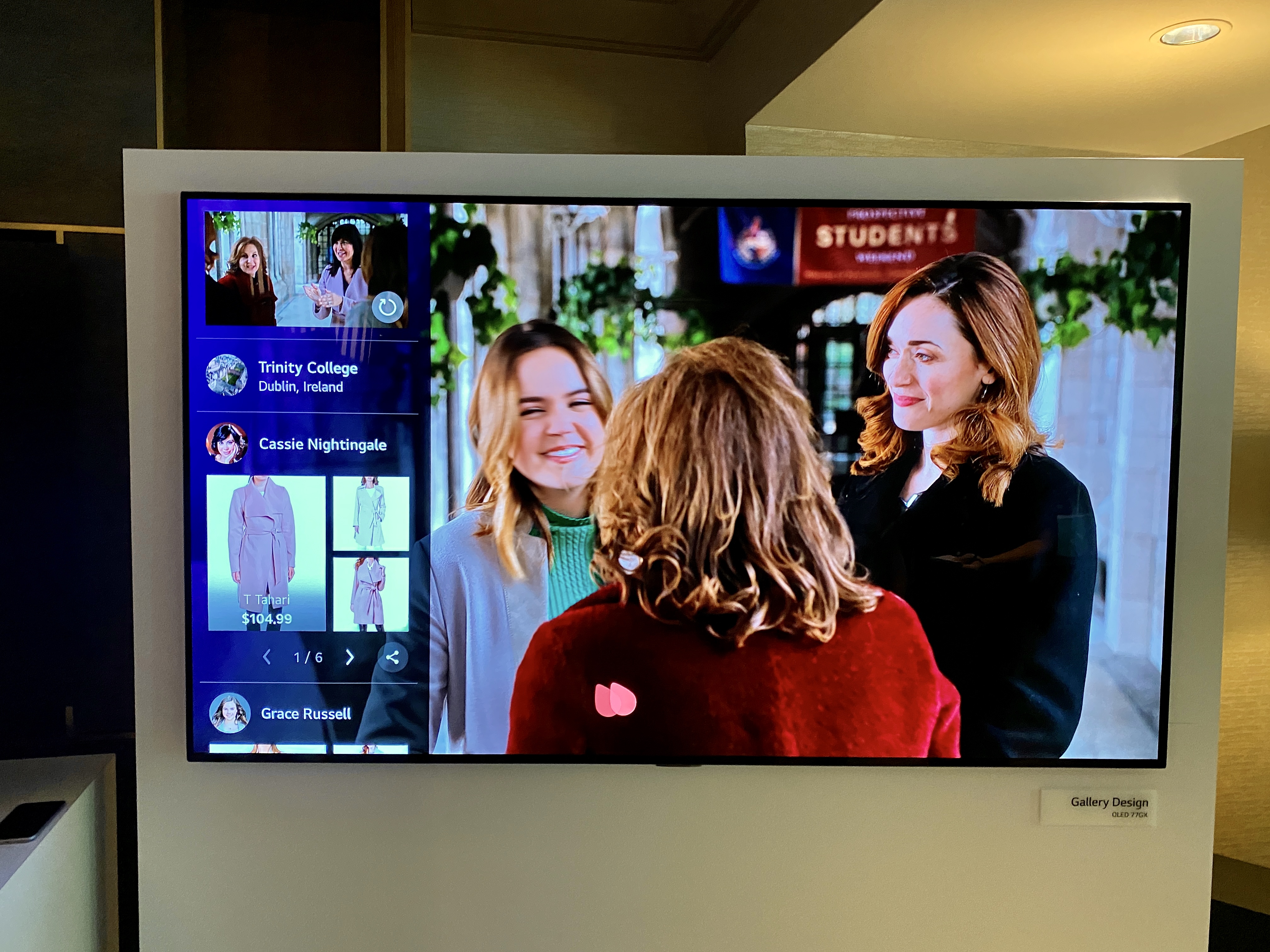
The microphones built into the TV and remote control enable AI enhancements to add a new layer of capability to the traditional smart TV experience. One of the coolest features we saw lets you ask for information about people and objects on screen. Simply asking "who is she?" triggers a process where the TV will analyze whatever is currently on the screen, identify the actors in a scene and then pull up an on-screen display that highlights actors, provides their names, and even breaks down their wardrobe to provide opportunities to buy pieces of clothing.
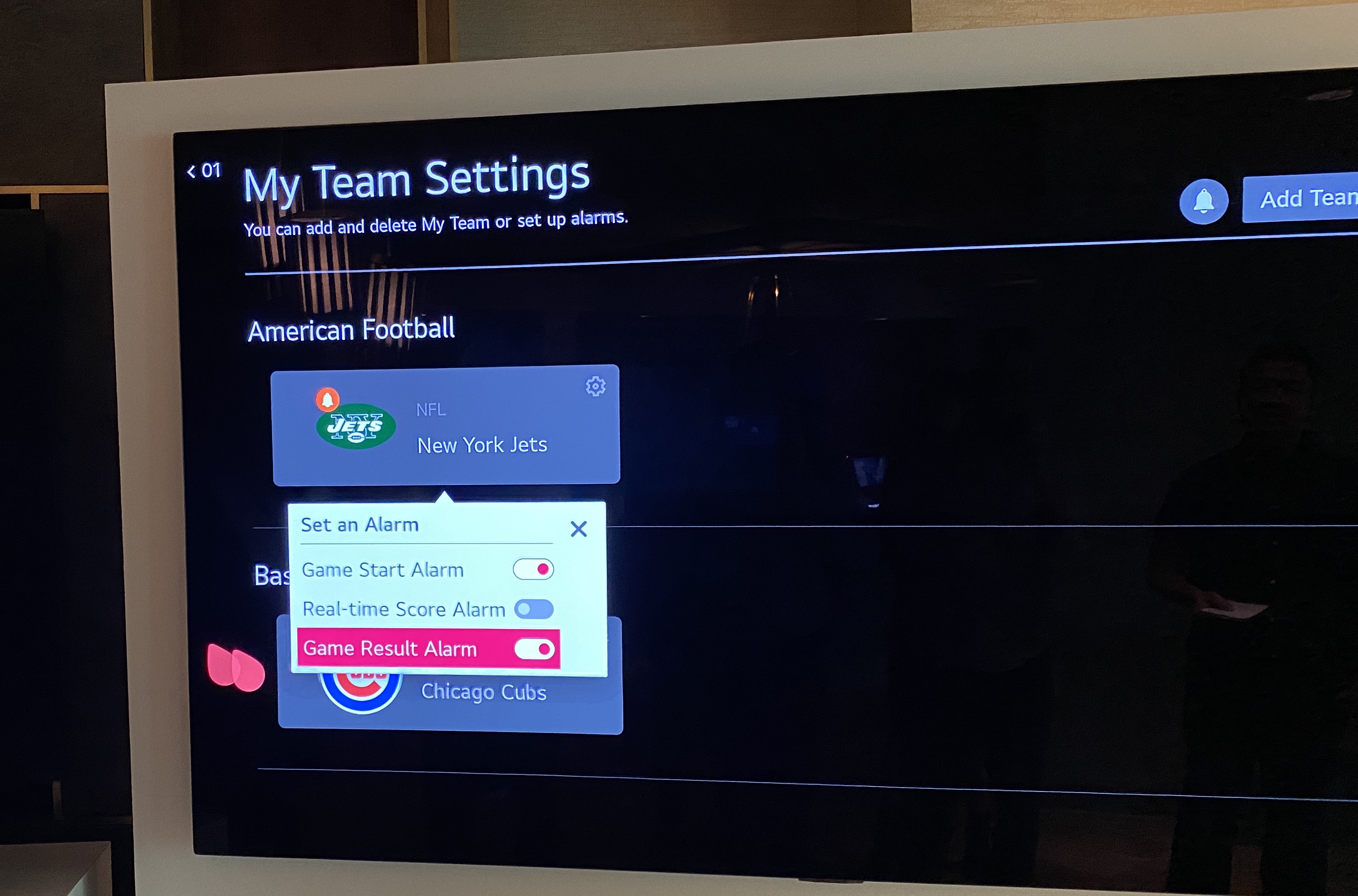
Another handy feature we saw lets you set alerts for your favorite sports teams. By selecting your preferred sports and the teams you want to follow, the TV can then monitor live programming for current and upcoming games. The alerts can be set to let you know when a game is about to start, to keep you apprised of scores if a game is on while you're watching something else, or to notify you when a game has ended.
Smart home dashboard
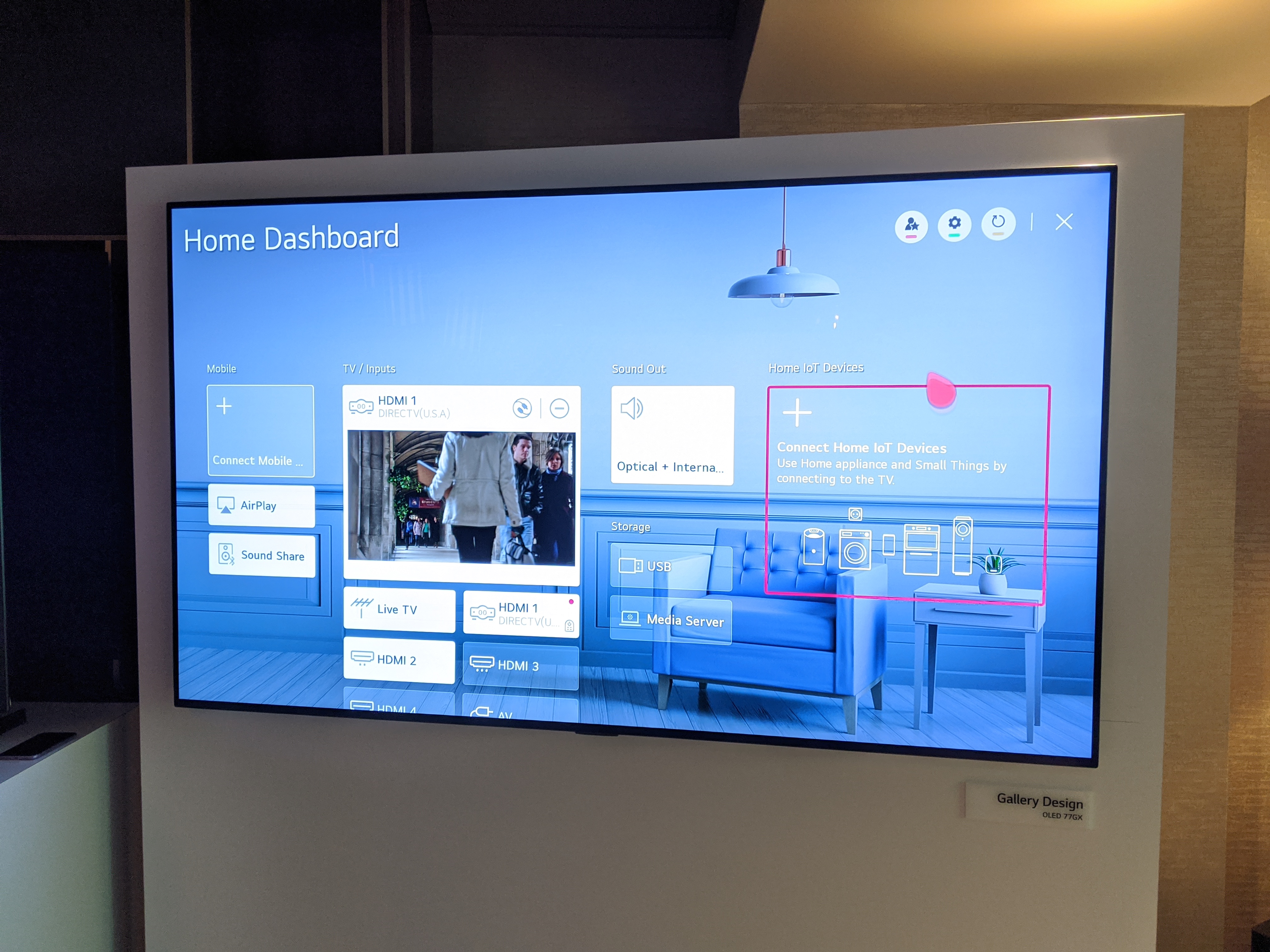
LG has also continued last year's home dashboard, a built-in control panel for all of your connected devices. While this does include traditional home entertainment devices such as Blu-ray players and game consoles, the dashboard is primarily made to let you monitor and control the other connected devices in your home: smart appliances, camera enabled doorbells, and a range of other IOT devices. Support for LG's entire ThinQ lineup of smart home gear is included, but also includes support for Open Connectivity Foundation (OCF) certified devices and other smart home products.
The end result is that the TV can be the center of your smart home, letting you manage devices, view camera feeds and control functions right from the comfort of your couch.
HDMI 2.1, G-Sync for gaming and ATSC 3.0
Finally, the LG gallery series, along with the rest of the 2020 lineup, has HDMI 2.1 ports for all HDMI inputs, bringing support for improved bandwidth and an expanded feature set. This includes higher frame rates, with 4K video supporting frame rates of up to 120 hz, new uncompressed audio format supported for enhanced audio return channel (eARC) support, and variable frame rate support for gaming.
In addition to the variable refresh rate (VRR) already offered over HDMI 2.1, LG has partnered with Nvidia to include support for G-Sync. This gamer-favorite technology matches graphics card output with the refresh rate of the TV to prevent screen tearing and stuttering during gameplay, resulting in a smoother gaming experience. LG and Nvidia debuted this technology last year, but the compatibility has been refined for 2020 with support for 4K content at refresh rates up to 120Hz. This G-Sync capability will be offered on all of LG's 2020 OLED TVs.
The Gallery Series OLED TVs will also come with built-in ATSC 3.0 tuners, the first TVs we've seen to offer support for the new broadcasting technology. With a slew of new capabilities, like 4K over the air and a return channel that allows for interactivity and targeted advertising, ATSC 3.0 is the next big thing in free TV, and it's set to start rolling out this year. Check out our in-depth look at ATSC 3.0 for the full scope of what is coming.
Brian Westover is currently Lead Analyst, PCs and Hardware at PCMag. Until recently, however, he was Senior Editor at Tom's Guide, where he led the site's TV coverage for several years, reviewing scores of sets and writing about everything from 8K to HDR to HDMI 2.1. He also put his computing knowledge to good use by reviewing many PCs and Mac devices, and also led our router and home networking coverage. Prior to joining Tom's Guide, he wrote for TopTenReviews and PCMag.
